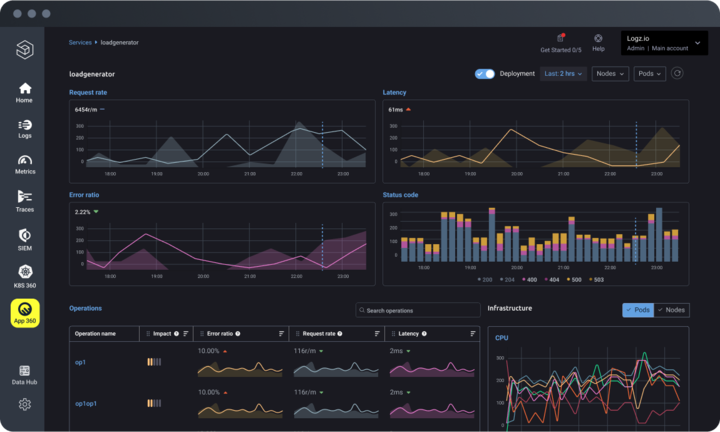Logz.io this week added an application performance management (APM) tool to its observability platform that is optimized for cloud-native applications running on Kubernetes clusters.
Available at no additional cost, App 360 provides an application-centric approach based on the metrics, logs and traces that Logz.io already collects from applications and the underlying infrastructure using open source OpenTelemetry agent software that can be used to automatically instrument an application via an Easy Connect tool.
That telemetry data is automatically tagged and organized by the microservice that generated it. A Logz.io Service Map and Service List then make it simpler to track the individual microservices that make up a cloud-native application.
The Logz.io platform also uses machine learning algorithms to identify, remove or transfer unneeded observability data to reduce total costs.
Logz.io CEO Tomer Levy said that as more cloud-native applications are deployed in production environments, their increased complexity requires an APM tool that leverages the ability of the Logz.io Open 360 observability platform to pinpoint the root cause of a degradation issue or outright outage.
There is, of course, no shortage of APM tools, but most of them, in addition to being more complex to set up, are not optimized for cloud-native applications running on Kubernetes clusters, added Levy. Historically, the challenge has been the cost of acquiring and setting up an APM platform, including the need to instrument applications using proprietary agent software.
It’s not clear how quickly IT teams are adopting observability platforms, but the proliferation of cloud-native applications will soon force the issue. While simpler to update, these applications are generally more complex to build and manage. Rather than simply crashing, the performance of these applications will degrade as calls are rerouted around microservices that, for one reason or another, might be unavailable. Given all the dependencies between microservices, without the aid of an observability platform, it can take weeks for IT teams to track down the root cause of issue. Legacy monitoring tools that track pre-defined sets of metrics can only alert an IT team that there is an issue. Diagnosing the problem requires tools for interactively querying telemetry data.
That may become an even more pressing issue as artificial intelligence (AI) advances make it easier to build and deploy microservices, noted Levy. In the not-too-distant future, the velocity at which cloud-native applications can be built and deployed will dramatically accelerate. The challenge IT teams will encounter is finding ways to manage them all at what will soon be unprecedented levels of scale, added Levy.
Each IT team will need to decide whether they prefer to use observability and APM platforms optimized for Kubernetes environments, but it’s going to be almost impossible to manage cloud-native applications without them. The complexity of cloud-native applications has moved well beyond the ability of legacy manual processes to effectively manage. In fact, observability has always been a central tenet of any DevOps workflow. Really achieving observability has, however, often proven to be more challenging than anyone in IT would prefer.




